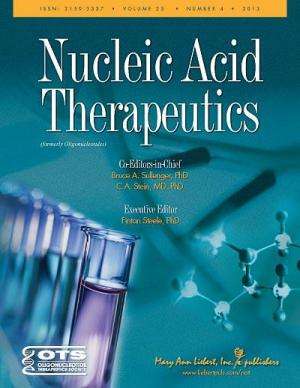Credit: ©2013, Mary Ann Liebert, Inc., publishers
New classes of therapeutic antisense oligonucleotides can have toxic effects on the liver. A novel machine learning-based approach used to predict the hepatotoxic potential of an antisense drug based on its chemical sequence is presented in Nucleic Acid Therapeutics.
Peter Hagedorn and coauthors from Santaris Pharma, Hørsholm, Denmark, and University of Copenhagen, Denmark, describe the use of machine learning techniques to develop a method of classifying therapeutic oligonucleotides based on their DNA sequence and modification patterns. Computers create a classification scheme linking this variation to a compound's potential to cause liver toxicity.
In the article "Hepatotoxic Potential of Therapeutic Oligonucleotides Can Be Predicted from Their Sequence and Modification Pattern," the authors demonstrate the use of this approach to predict the hepatotoxicity of a validation set of oligonucleotides with 74% accuracy. They also use the classifier scheme to identify a therapeutic oligonucleotide with high potential liver toxicity and show how the drug could be redesigned to reduce its potential toxicity.
"As is true of all potential therapeutic entities, whether small molecules or nucleic acid-based drugs, it is critical to understand as much as possible about possible toxic effects before proceeding to clinical trials," says Executive Editor Fintan Steele, PhD, SomaLogic, Inc., Boulder, CO. "The approach described by these authors holds great promise for maximizing the safety of in vivo testing and, we hope, the eventual clinical use of these new antisense-based compounds."
More information: The article is available on the Nucleic Acid Therapeutics website.
Provided by Mary Ann Liebert, Inc
























